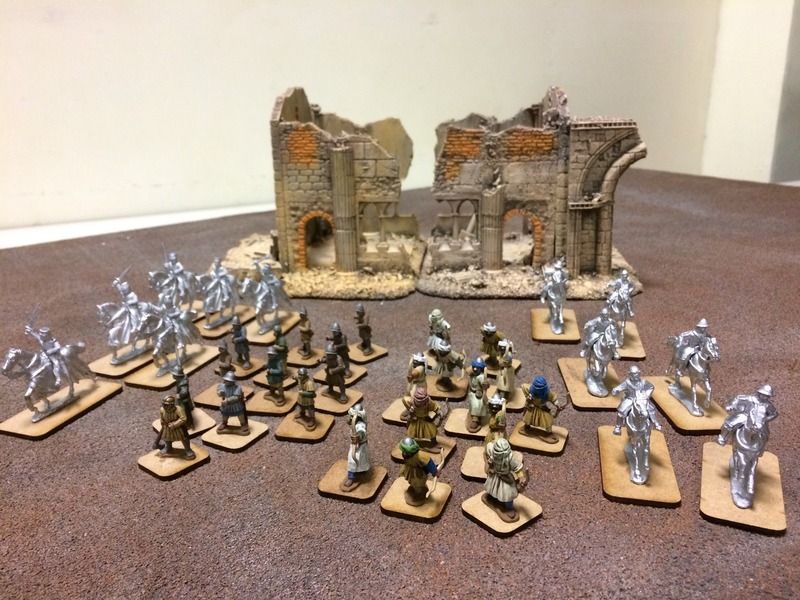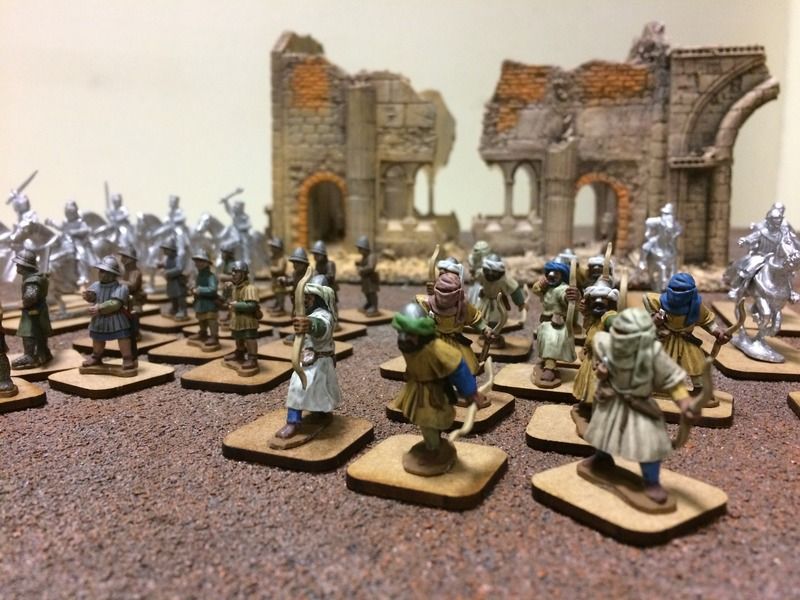Here we are with the second installment of our blog. First of all, let me thank those who had a peek at the first one and found the time to read it.
Today we analyse the battle we are trying to reconstruct, which took place among the ruins of the old city of Lodi in the spring of 1239 between the armies of Milan and Lodi. Not very much is known about the fight itself, the number of forces involved and the name of the commanders besides the papal legate, Gregorio da Montelongo. All our informations come from this excerpt of the Annales Placentini Gibellini, which were written a few decades later:
1239. Indicione 12. De mense Aprilis domnus papa direxit Gregorium de Montelongo eius notarium et legatum in civitatem Mediolani; qui statim ut ibi accessit, sumptis civibus de mandato eius signo crucis et paratis duobus vexillis cum crucibus et clavibus intus, venit ad Laudum vegium, et ibi cum Mediolanensibus sua tentoria finxit destruendo turres ecclesiarum et segetes devastando.
Annales Placentini Gibellini, ed. G.
H. Pertz, in Monumenta Germaniae Historica Scriptores in folio, vol.
XVIII, Hannover 1863, p. 481. You can find the text online here.
In 1239 the Lodigiani were allies of Emperor Frederick II, and they had regained control of the site of Lodi Vecchio. As soon as Cardinal Montelongo reached Milan on a papal mission, he authorised the Milanese to take the cross (which is a quite unmistakable reference to a crusade), and having prepared banners with the symbols of the cross and of St. Peter’s Keys (which was the coat of arms of the popes), they successfully attacked Lodi Vecchio, destroying the towers of the churches and laying waste to the surrounding fields. Then, Montelongo pitched his camp in proximity of the city, almost surely an act of open defiance against Lodi and the emperor. The actions of the Milanese on that occasion do not look particularly pious and crusade-like. Yet we need to remember that the author of the Annales Placentini Gibellini generally showed sympathy for the imperial cause and its supporters, and we should take his writings with a pinch of salt.
We chose it because it is the first recorded example of a military clash in northern Italy that shows crusading features. Actually, it is a very intriguing case, because it preceded by a few months the official launch of the crusade by Pope Gregory IX against Emperor Frederick II, which took place in 1240. The adoption of crusading features at Lodi Vecchio might have been a personal initiative of the provocative Cardinal Gregorio da Montelongo, whom the pope had sent to Milan to foster local resistance against the emperor. In other words, the battle of Lodi Vecchio was probably a test, whose success contributed in convincing Pope Gregory IX to take the momentous step of launching what was the first ever crusade against a Holy Roman Emperor (which might look like a contradiction in terms), thus introducing internal crusades to northern Italy.
On the other hand, it could be argued that the crusading features of the battle of Lodi Vecchio added a religious coating to the traditional enmity between the cities of Milan and Lodi. Milan was the most important city in northern Italy, and the main foe of the emperors there. Milan wished to bully and control its smaller neighbours, like Lodi, which, in turn, sought imperial protection (the rebel alliance in northern Italy was not that good after all). Indeed, by 1239 the two cities had been fighting intermittently for more than a century. Lodi Vecchio was the original site of the city of Lodi (an ancient Roman settlement itself), which the Milanese had destroyed in 1158, leaving behind only ruins and a few standing churches. The expelled inhabitants of Lodi (called Lodigiani) rebuilt their city (‘New Lodi’), with the help of Emperor Frederick I Barbarossa (the grandfather of Frederick II) a few miles away, in a more defensible position. Since then, however, Lodi had been trying to regain its ancestral homeland and the Milanesi had been trying to prevent it. The situation recalls the fate of Osgiliath, the famous ruined battleground of the Lords of the Rings.
We will examine the controversial figure of Montelongo in one of our next posts, but here's a teaser of the model from Gripping Beast we have chosen to represent him on the battlefield. You can find it in their online webstore:
If you want to read more about the crusade against Frederick II and the Italian city republics, Gianluca's article on the subject is free to download at this link.
Soon we'll talk about Lion Rampant!













